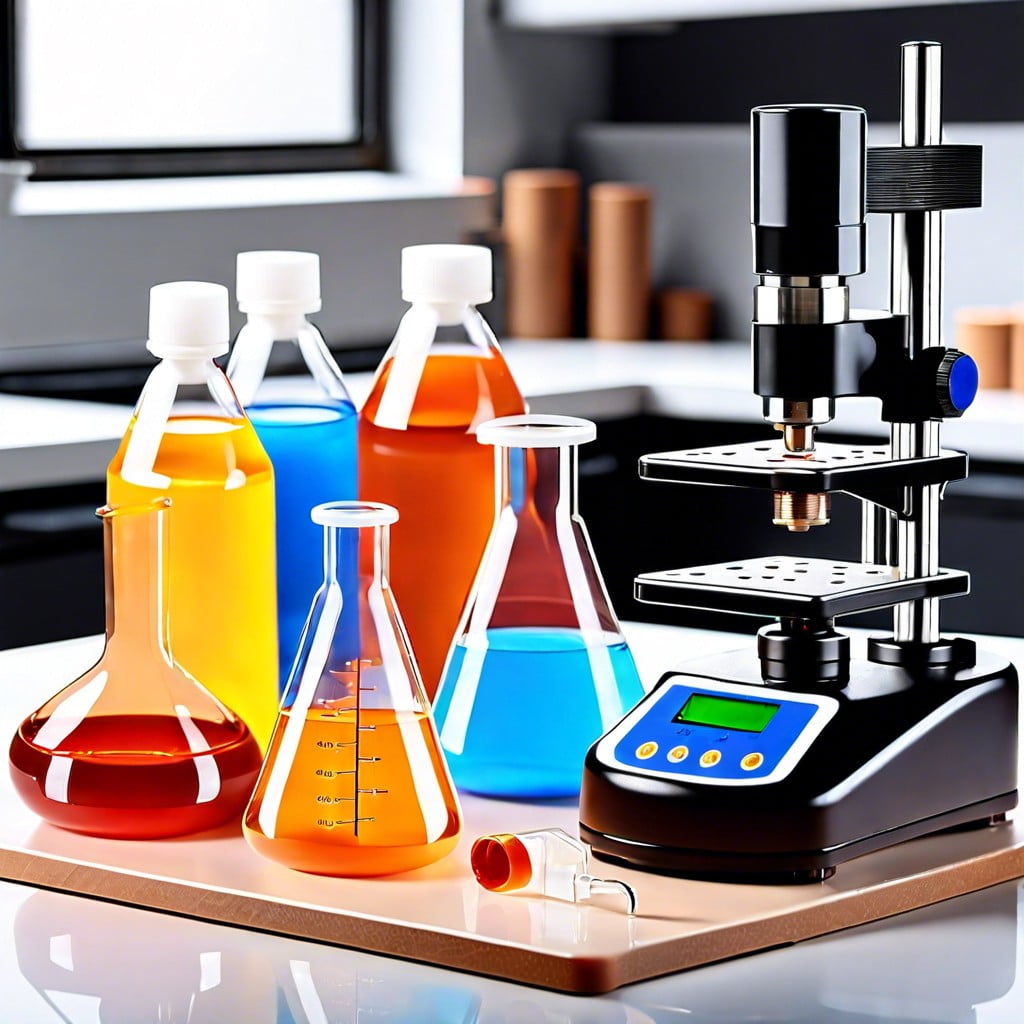This article explains how polymer testing is performed and why it’s crucial for ensuring the safety and quality of polymer-based products.
Key takeaways:
- Polymer testing involves mechanical, thermal, chemical, and electrical analysis.
- Quality control through testing ensures materials meet required standards.
- Common techniques include tensile testing, thermal analysis, and impact testing.
- Polymer testing faces challenges in variability and interpreting results.
- Future trends include self-healing materials, AI, nanotechnology, and sustainability practices.
Types of Polymer Tests

Polymers can be as diverse as the uses they are put to, from sturdy PVC pipes to flexible silicone seals. Testing these versatile materials involves several different methods, each suited to finding specific properties:
– **Mechanical testing** assesses strength, elasticity, and durability. Tensile tests pull a material until it breaks, while compression tests check how well it can handle being squished.
– **Thermal analysis** is crucial for understanding how a polymer behaves under various temperatures. Techniques like Differential Scanning Calorimetry (DSC) measure how a polymer’s heat capacity changes with temperature.
– **Chemical resistance tests** determine how well a polymer can stand up to corrosive environments, which is critical for products that will be exposed to harsh chemicals.
– **Electrical testing** looks at conductivity and resistivity. This is especially important for polymers used in electrical and electronic applications.
Each type of test helps paint a comprehensive picture of a polymer’s behavior under different conditions, guiding decisions in product development and quality control.
Importance of Polymer Testing in Quality Control
Polymer testing plays a critical role in ensuring that materials meet the required standards for their intended applications. Here’s why quality control is so essential:
Firstly, the testing helps identify the mechanical properties of a polymer, such as tensile strength and elasticity. This information is vital to verify that a material can withstand the forces it will encounter in use.
Secondly, it checks for chemical resistance. This ensures that the polymer won’t degrade unexpectedly when exposed to various chemicals it might encounter during its lifecycle.
Finally, polymer testing involves analyzing thermal properties, crucial for applications involving heat and temperature changes. This step helps prevent failures and guarantees safety and longevity of the material in differing climate conditions.
These testing protocols help manufacturers avoid costly recalls and maintain consumer trust by consistently delivering high-quality products.
Common Techniques in Polymer Testing
Polymer testing employs various techniques, each suited for specific properties and applications. One popular method is tensile testing, which measures a polymer’s strength and elongation. This involves stretching a sample until it breaks, providing clear insights into its durability and elasticity.
Another key technique is thermal analysis, through Differential Scanning Calorimetry (DSC) and Thermogravimetric Analysis (TGA). DSC assesses a polymer’s thermal transitions, like melting point and crystallization, while TGA determines thermal stability by measuring weight loss as the material is heated.
Impact testing is also crucial, especially for polymers used in high-stress environments. This test evaluates a material’s toughness under sudden impacts, simulating real-world abuse and accidents.
For a comprehensive understanding of polymer behavior, spectroscopy methods like Fourier Transform Infrared Spectroscopy (FTIR) are used. FTIR helps identify chemical compositions and any impurities, ensuring the polymer meets specific performance standards.
Each technique serves as a building block towards understanding and improving the performance and safety of polymer materials in their respective applications, contributing vital information for manufacturers and end-users alike.
Challenges in Polymer Testing
Assessing the durability and performance of polymers can feel like solving a Rubik’s cube due to their complex nature. Factors like environmental conditions, load, and time can significantly influence results, making standardized testing challenging.
Many polymers also behave differently under varied temperatures and humidity levels, introducing more variables into testing procedures. This requires multiple tests across different conditions to ensure reliability, which can be time-consuming and expensive.
Furthermore, the rapid pace of innovation in polymer materials demands constant updates to testing standards and methods. Adapting quickly to these changes without compromising accuracy is another hurdle that manufacturers and researchers must overcome.
Lastly, interpreting test results can be tricky as well. Minor inconsistencies in the testing process can lead to vastly different outcomes, demanding a high level of precision and expertise from the testing team.
Future Trends in Polymer Testing Technology
As technology advances, so too does the field of polymer testing. Here are a few key developments to look out for:
**Self-healing materials:** Researchers are focusing on creating polymers that can repair themselves when damaged. This innovation could drastically reduce maintenance costs and extend the lifespan of polymer-based products.
**AI and machine learning:** These technologies are starting to play a major role in improving testing methodologies. By analyzing vast amounts of data, AI can predict polymer behaviors under various conditions, leading to faster and more accurate testing processes.
**Nanotechnology:** The integration of nanotechnology in polymer testing allows for the manipulation of materials at the molecular level. This precision facilitates the development of more efficient, lightweight, and durable polymers.
**Sustainability practices:** As environmental concerns become more prominent, there is a growing trend toward developing eco-friendly testing methods that minimize waste and use less hazardous materials.
These technologies are not just reshaping polymer testing; they’re setting the stage for a revolution in how we develop and utilize materials across industries.
Recap




